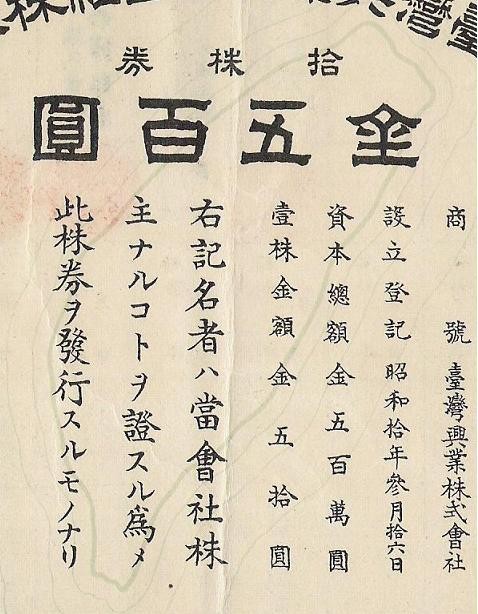An Introduction To Formosa Bond
Post on: 9 Апрель, 2015 No Comment

Date Published: 13 November 2014
Definition (Source: GreTai Securities)
> Taiwan foreign-denominated international bonds, so called Formosa Bonds, are publicly issued or privately placed foreign currencies denominated bonds. These bonds are issued by Taiwan domestic or Formosa issuers with competent credits, in the conditions that are not denominated in Renminbi, and are listed on GreTai Securities Market (GTSM).
Market Developments (Source: GreTai Securities, SBR, IFR Asia)
> The Formosa bond market is relatively new, having started in March 2013. The first Formosa bond issue is a RMB 1 bn 3-year note by CTBC bank.
> Beginning in November 2013, mainland banks started issuing Formosa bonds in November 2013, and their issues have dominated since then.
> As the total bond issuance of 14.1 billion yuan last year accounted for just 3 percent of Hong Kongs yuan-denominated dim sum bonds. the Financial Supervisory Commission recently unveiled a series of deregulatory measures that aims to help Taiwan develop into a regional offshore yuan hub, as well as boost the bond market and the nations underwriters.
> On 12 th November 2014, China Construction Bank Asia raised Rmb3.3 billion ($539 million), qualifying as Taiwans largest renminbi bond, underlining the increasing demand for such products from the second largest offshore renminbi market by deposits. The issuance is also the first four tranche renminbi bond in Taiwan.
Comparison with dim sum bond market (Source: UBS)
> Dim sum bond (Rmb denominated bonds issued in Hong Kong) market is much more established than Taiwans Formosa bond market. Since 2007, > Rmb1.1trn of dim sum instruments (including CDs, certificate of deposits) have been issued in Hong Kong, of which >Rmb550bn is still outstanding. In comparison, Formosa bond issued and outstanding currently stands at only Rmb 30.4 bn.
> Historically, Formosa bond yields have been substantially lower than yields of Dim Sum bonds issued in HK, but have recently converged to Dim Sum bond yields. SC added that Formosa bond liquidity has been poor, but should improve on recent regulatory easing.
Rules and Regulations (Source: GreTai Securities, UBS, IFR Asia)
> Bonds to be traded must have a credit rating of BBB or higher; they may not be issued in Chinese renminbi, the official currency of the Peoples Republic of China.
> Trading between securities firms has to be carried out through a subsystem of the GreTai Securities Markets Electronic Bond Trading System, for which trading hours are between 9:00 AM and 1:30 PM. However, Formosa bonds also listed on overseas exchanges may be traded over-the-counter between bond dealers.
> Domestic issuers are qualified to only issue foreign currency denominated corporate straight bonds and financial debentures, in terms of public offering and private placement, must be rated as BBB or higher. The rating information must be provided by credit rating agencies that are approved or recognized by the FSC. Besides straight corporate bonds, domestic issuers also can issue convertible bonds, corporate bonds with warrants, or ECB and EWB issued overseas. For bonds issued overseas, the application can only be submitted after one month of the issuance.
> Foreign issuers are qualified to only issue if they fit
A) Criteria for Exempted Issuance
1. It is a supranational organization; or 2. A straight bond is offered and issued, or privately placed, by a foreign issuer. The foreign issuer should has a long-term credit rating as AAA or higher from a credit rating agency approved or is recognized by the competent authority and is wholly owned by the government of its home country. 3. Or a bond from such issuer that is fully guaranteed by the government of the issuers home country
B) Criteria for Public Offering or Private Placement
1. The issuers stocks are listed on a foreign exchange or securities market approved by the FSC; and 2. The straight bond has received a credit rating as BBB or higher from credit rating agencies approved or recognized by the FSC
> In July, Taiwans legislature passed rules allowing Taiwanese insurers to exclude foreign currency bonds issued in the local market from their overseas investment quota, boosting insurers demand for such bonds, including Formosa bonds. Furthermore, Taiwans Financial Supervisory Commission raised the quota on Chinese banks Formosa bond issuance this year to a range of Rmb20 billion to Rmb25 billion from Rmb10 billion to Rmb15 billion. It may raise the quota further by year-end, to a range of Rmb30 billion to Rmb35 billion, according to Taiwan media. As of November 11 this year, 20 companies have raised a total Rmb13.5 billion through Formosa bonds.
Investor base
> Taipei-based UBS analyst Kelvin Chu said Taiwanese life insurers have relatively more appetite for long-duration instruments compared with their Hong Kong peers, making the nations Formosa bond market different from Hong Kongs dim sum bond market.
> A report by Standard Chartered provides positive outlook for Formosa bonds, the key investors of which will remain to be local investors. SC forecasts that international investors will likely increase participation through non-Taiwan issuers subject to 0% tax.
> -All five offerings from foreign lenders this year were sold entirely to Taiwan-based insurance companies, according to market sources.
Outlook
> While the current Formosa bond market is still in its very initial stage, we believe the abundance of liquidity in Taiwan suggests plenty of potential for Formosa bonds. The demand for Formosa bonds could reach 300 billion yuan (US$48.36 billion) from 14.1 billion yuan, with domestic life insurance companies set to be the biggest buyers, UBS said.
Appendix: List of Formosa bonds issued to date (Source: Bloomberg)














